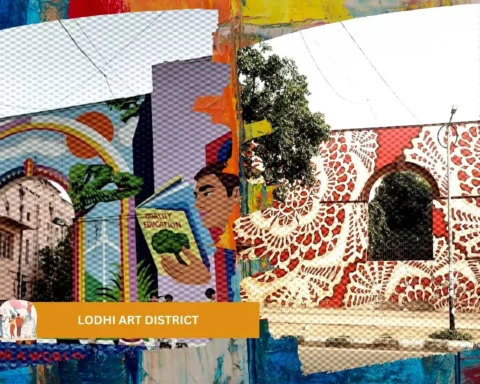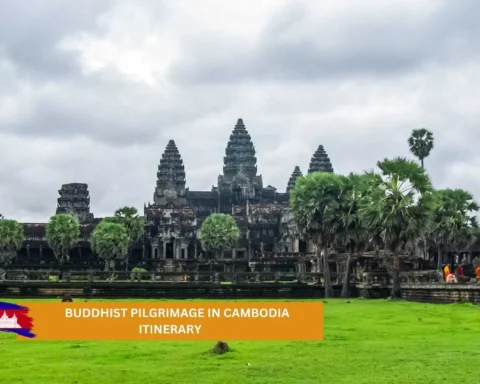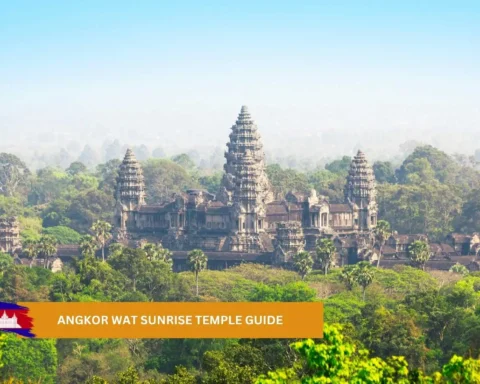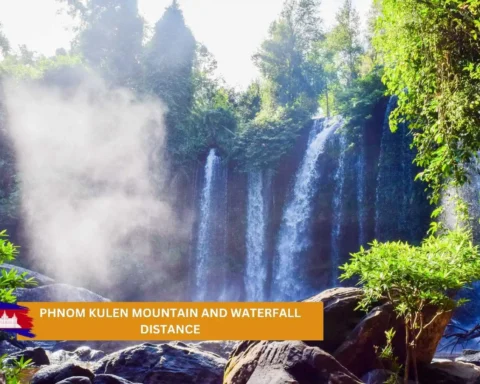Angkor Wat is one of the most important and significant Hindu and Buddhist temples in Southeast Asia. Located in Siem Reap, Cambodia, the UNESCO World Heritage Site is almost a thousand years old, dating back to the Khmer Empire. Today, this historical marvel is open to the public, as are many other related structures, complexes, and attractions, all of which bear significant historical and religious relevance. In this article, we will delve into all the essential Angkor Wat travel tips for Indians visiting Cambodia for the first time.
Table of Contents
Angkor Wat Travel Tips for Indians: What is the Best Time to Visit the Temples
When planning a trip to Angkor Wat, the timing can significantly impact your experience. The best time for Indian tourists to visit is during the dry season, which spans from November to February. During these months, the weather is cooler and more comfortable, particularly for exploring the temple complex. Temperatures hover around 25°C to 30°C, providing ideal conditions for sightseeing without the oppressive heat or humidity typical of the rainy season.
March to May can get quite hot, with temperatures rising above 35°C, which might be uncomfortable for long outdoor visits. The monsoon season, from June to October, brings frequent rain showers, which can make some paths slippery and less enjoyable for exploring. However, this is also the low season, meaning fewer tourists and lower accommodation prices, so if you’re willing to brave the rain, it can be a more peaceful time to visit.
Consider the time of day too: early mornings and late afternoons offer stunning views, especially during sunrise and sunset, when the temple is bathed in golden light. The sunrise at Angkor Wat is a bucket-list experience, but be prepared for crowds. For a quieter experience, aim to visit after the early morning rush.

Visa Requirements and Essentials for Indians Heading into Cambodia
Perhaps the most important of the Angkor Wat travel tips for Indians travelling for the first time is the proper documentation. For Indian nationals, obtaining a tourist visa for Cambodia is a straightforward process, thanks to the e-Visa system. You can apply online for an e-Visa, which is valid for 30 days and can be processed within 3 to 5 business days. The e-Visa allows you to enter Cambodia through several international airports, including the one in Siem Reap, which is closest to Angkor Wat. To apply, you’ll need to submit a digital passport-sized photo, a scanned copy of your passport, and pay a small processing fee online.
Alternatively, Indian visitors can obtain a visa on arrival at the Siem Reap International Airport, though it’s more time-consuming. Ensure your passport is valid for at least six months from the date of entry, and keep in mind that Cambodia also has certain restrictions based on your travel history, so always double-check the latest travel advisories before departure.
When traveling to Cambodia, make sure to have travel insurance that covers medical emergencies, as healthcare services may not be up to the standards that Indian tourists are accustomed to. It’s also essential to carry sufficient local currency (Cambodian Riel) or US dollars (which are widely accepted) for smaller purchases, while larger expenses can be paid by card.
Cultural Etiquette at Angkor Wat
When visiting Angkor Wat, it’s essential to observe local customs and respect the temple’s sacred significance. Dressing modestly is a key part of this etiquette. Both men and women are expected to cover their shoulders and knees with loose, breathable clothing that works best, especially in the warm Cambodian climate. Revealing or tight clothing should be avoided, as it can be perceived as disrespectful. You’ll also need to remove your shoes when entering certain temple areas as a sign of reverence.
While exploring, keep noise levels to a minimum. Monks and worshippers frequent the temple, and it’s important to be quiet and respectful of their spiritual practices. It’s also advisable not to touch or climb on statues or temple walls, as these are sacred. If you plan to take photos, be mindful of your surroundings, ask for permission if necessary, and avoid using a flash in religious areas.
When navigating the temple complex, always follow the designated paths and respect any restricted zones. If you’re traveling with children or in a group, ensure that they understand and follow the cultural norms to preserve the peaceful atmosphere of the site.
Top Places to Visit in Siem Reap
Siem Reap is home to some of Cambodia’s most iconic temples, and while Angkor Wat is the main attraction, there are several other stunning sites worth exploring in the Angkor Archaeological Park.
Angkor Thom, the ancient capital of the Khmer Empire, is one of the most significant historical sites in the region. The Bayon Temple at its heart is famous for its towering stone faces, while the Terrace of the Elephants offers magnificent views. Don’t miss the Terrace of the Leper King, which is renowned for its detailed carvings. The ticket office for Angkor Thom is located near the entrance to the park, where you can purchase your pass for multiple temple visits.
Preah Khan, or “Sacred Sword,” is a sprawling temple complex that once served as a Buddhist university and monastery. Built by King Jayavarman VII, this site is known for its large scale, exquisite carvings, and lush surroundings. The ticket office for access to Preah Khan can also be found near the main park entrance, where visitors can purchase a multi-day pass to explore other temples like Angkor Wat.
Ta Prohm is one of the most visually striking temples in the Angkor area. Often referred to as the “Tomb Raider Temple” due to its appearance in the Hollywood film, the site is famous for massive tree roots that have entwined themselves around the stone structures. The unique blend of nature and ancient architecture creates a surreal, almost mystical atmosphere.
Srah Srang, often overlooked by many tourists, is a beautiful royal bathing pool located near the temple of Banteay Kdei. This serene location offers a peaceful retreat, ideal for reflection after visiting the more crowded temples. The pool is framed by elegant stone terraces and is best visited in the early morning or late afternoon for spectacular views.
Conclusion
Visiting Angkor Wat and the surrounding temple complex is a truly awe-inspiring experience that offers a glimpse into Cambodia’s rich cultural heritage. By following these Angkor Wat travel tips for Indians, you can ensure a more comfortable, respectful, and enjoyable trip. From the best times to visit the majestic Angkor Wat Sunrise to gaining access to Angkor tickets as well as understanding visa requirements to respecting local customs and exploring nearby attractions like the Angkor pass, Preah Khan, Ta Prohm, and Srah Srang, these insights will help you make the most of your adventure in Siem Reap.
Whether you’re a history enthusiast, a photographer, or someone simply seeking spiritual enrichment, the temples of Angkor are bound to leave a lasting impression. Be prepared, stay respectful, and embrace the wonders of one of the world’s most magnificent archaeological sites.

FAQs
What is the best time to visit Angkor Wat for Indian tourists?
The best time to visit Angkor Wat is during the dry season, from November to February, when the weather is cooler and more comfortable for sightseeing. The early mornings and late afternoons are also ideal for avoiding crowds and experiencing the temples in beautiful light.
How can Indian tourists get a visa for Cambodia?
Indian nationals can apply for an e-Visa online, which allows for a stay of up to 30 days. Alternatively, you can obtain a visa on arrival at Siem Reap International Airport. Ensure your passport is valid for at least six months from the date of arrival and check any latest travel advisories before applying.
What are the must-see temples near Angkor Wat?
Apart from Angkor Wat, you should definitely visit Angkor Thom, known for the Bayon Temple and the Terrace of the Elephants, Preah Khan, an expansive temple with intricate carvings, Ta Prohm, famous for its tree-entwined ruins, and Srah Srang, a peaceful royal bathing pool. All these are part of the Angkor Archaeological Park and offer unique insights into the Khmer Empire’s grandeur.









